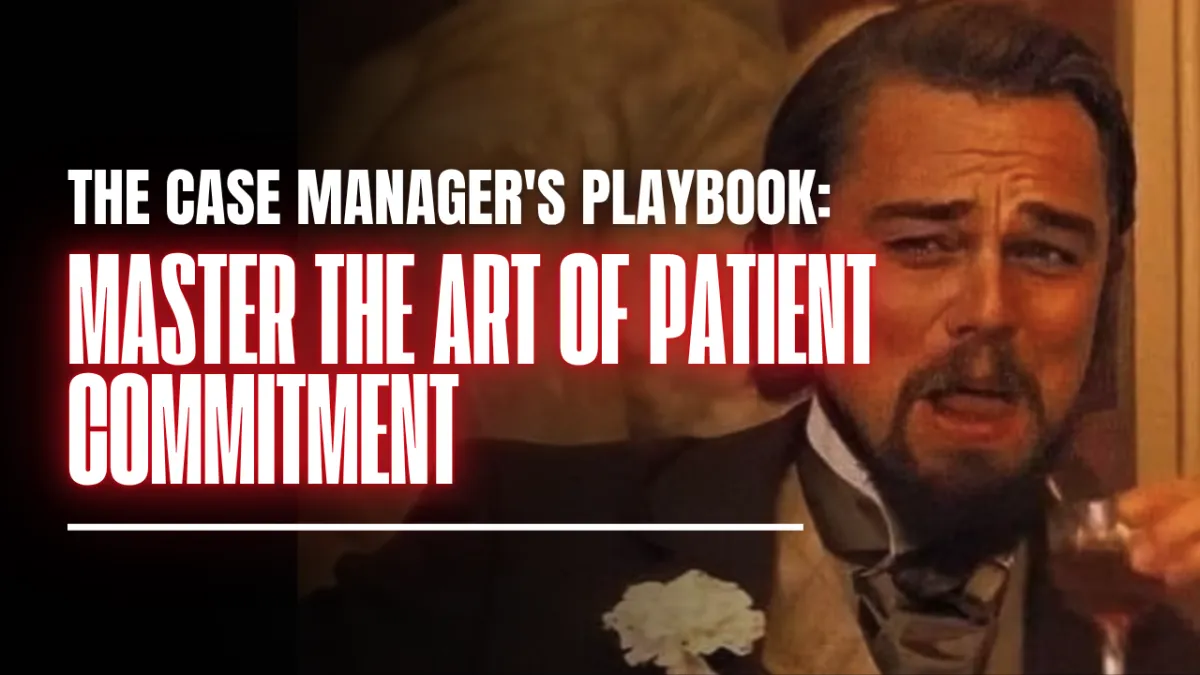
Mastering the Patient Interaction: The Case Manager’s PIPS Guide
Learn how to turn patient objections into opportunities with simple, proven communication techniques that build trust and drive commitment.
“The art of communication is the language of leadership.” – James Humes
As a case manager, you’re not just presenting treatment plans — you’re translating hope, goals, and transformation into words patients can understand and trust. Yet, even the best case managers can struggle with certain sticking points — or as we call them, PIPS (Points in the Patient Process).
If you’ve ever found yourself facing objections, confusion, or hesitation from patients when discussing treatment, payments, or scheduling, this one’s for you.
In this article, you’ll learn how to:
Frame treatment plans around the patient’s goals
Explain payments in a way that builds confidence, not confusion
Overcome scheduling conflicts with empathy and clarity
Framing Treatments Around the Patient’s Goals
One of the biggest mistakes case managers make is jumping straight into what the clinic offers — rather than connecting care to what the patient truly wants.
As Natasha Saavedra shares, patient goals should be uncovered in the day one consultation, not later. This is where you get to the “why” behind their visit:
“How is this pain affecting your work, your energy, your family life, your hobbies?”
When a patient says they want to “get out of pain,” that’s only the surface. Dig deeper. Maybe what they really want is to play pickleball again, walk their dog, or shop with friends without fatigue.
By the time you reach Day 2 — the Report of Findings — you’re not just explaining red light therapy or spinal decompression. You’re painting a picture of how those treatments connect directly to their goals:
“This therapy will strengthen your nerves and muscles so you can feel stable again walking your dog.”
That’s when treatment becomes personal — and trust begins to build.
Explaining Payment Options Clearly and Calmly
Let’s talk about one of the most uncomfortable parts of any patient conversation: payments.
Here’s the truth — most discomfort doesn’t come from the dollar amount; it comes from confusion and pressure. Natasha emphasizes one rule above all others:
“Go one option at a time. Zip it, lock it, and put it in your pocket.”
Offer Option A first (for example, a prepayment discount). State the facts clearly, then stop talking. Let the patient think.
Silence may feel uncomfortable, but it gives patients the mental space to process and make a decision. If they can’t do Option A, then move to Option B (such as Care Credit or monthly payments).
When you rush and list multiple options too quickly, patients get overwhelmed — and that’s when you’ll hear, “I need to think about it.”
Slow down. Give space. Clarity converts.
Overcoming Scheduling Conflicts with Ease
Now let’s address the third common challenge: scheduling.
The worst phrase you can say is, “We need to get you scheduled for 36 visits.” That’s overwhelming — and it makes patients feel trapped.
Instead, keep it simple:
“Which three days work best for you?”
Then, when transitioning to once-a-week care:
“Which one day would you like to keep?”
This conversational flow makes scheduling feel easy and collaborative — not rigid.
Patients who feel accommodated are far more likely to stay consistent and complete their care plan. And remember, flexibility builds trust:
“If you have a vacation coming up, let us know in advance — we’ll schedule around it.”
It’s not about the number of visits. It’s about helping patients commit to their goals.
Reflection
Take a moment to ask yourself:
Do I take time to connect each treatment to a patient’s personal goals?
Am I giving patients the mental space they need to make payment decisions?
How can I make scheduling feel like a partnership, not a task?
Small changes in how you communicate can dramatically change your close rate and patient satisfaction.
Action Steps for Case Managers
Revisit your Day One consult form. Add at least two questions about lifestyle and goals beyond pain relief.
Practice the “Zip It” rule. Present one payment option at a time, then pause.
Simplify your scheduling script. Focus on the next few visits, not the entire care plan upfront.
Role-play with your team. Rehearse handling objections and conflicts in a calm, confident tone.
Prefer to Watch Instead?
If you’d like to see this concept broken down in action, watch the full training video here: 🎥 Video Link
Final Thought
At the end of the day, communication isn’t just about what you say — it’s about how you help patients feel heard, understood, and supported. When you master that balance, objections fade, confusion clears, and patients buy in — not because they were sold, but because they were seen.
Are you ready to elevate your communication and close with confidence?
Join the Sales Transformation Challenge – November 7
Take your communication and conversion skills to the next level.
Join our Sales Transformation Challenge on November 7 and learn the techniques top case managers use to lead, connect, and close with confidence.
WHO WE ARE
At MedPro Dojo, we help leaders and healthcare teams break through their limitations by strengthening culture, communication, and accountability.
Whether it’s through training, coaching, or leadership development, we’ll help you raise your lid and unlock your full potential.
